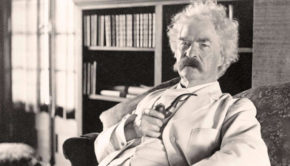Guest Commentary: August 8
Published on August 9th, 2012
Scuttlebutt strongly encourages feedback from the Scuttlebutt community.
Either submit comments by email or post them on the Forum. Submitted comments chosen to be published in the newsletter may be limited to 250 words. Authors may have one published submission per subject, and should save their bashing and personal attacks for elsewhere.
From Sally Lindsay Honey, US Sailing review panel chairperson:
I think Rodger Martin (in Scuttlebutt 3650) may have misinterpreted the US Sailing Farallones report statement of “more conservative course selection”
to mean the race committee should set a more conservative course, rather than the crew of Low Speed Chase should have chosen a more conservative course around the northwest point of the Farallon Islands.
If that is what he understood, I agree with his “no no no!” However, as stated on page 14 of the report, we dismissed the notion of the race committee defining an offset mark or minimum clearance distance specifically for the reasons that Rodger seems to espouse: racers should be trained in better seamanship skills. This is our primary recommendation
From Guy Le Roux:
I wholeheartedly agree with Bruce Kirby (Scuttlebutt 3649) that Paul Elvstrom is still the greatest Olympic sailor because he won 4 Gold Medals without the benefit of a throwout race. Without throw-outs at the 2012 Games, Ben Ainslie would have lost the gold by two points and finished with the silver.
From Michael Rudnick:
Your reporting (in Scuttlebutt 3650) that only 3 USA teams were at the I420 World Championship in Austria last week is not correct. The US had 12 teams
(6 open and 6 ladies).
Besides the 3 teams that finished in the gold division, as you reported, the US ladies had a 2nd in Silver fleet (my daughter Megan, who also finished 11th at ISAFs last month in Ireland), and a 4th in the open silver fleet (Reinier Eenkema van Dijk, who went to ISAF in 2011).
The top US open team that finishes 15th was also the top open team under 16 years of age – with two time Optimist worlds team member Wade Waddell at the helm after being in the I-420 for only a few months (which involved flying to NY/CT every weekend to train with LISOT as there are no I-420s on his home waters of south Florida)
As I’m sure you know, the US does not place nearly as many sailors in the gold fleet as most of the European countries – which is directly related to your comments about the pipeline for Olympic sailors.
EDITOR’S NOTE: We stand corrected, as we indeed were only looking at the performance of North American sailors in the Gold Division.
From Peter Commette:
Regarding the comment “Future Prospects” (Butt-3650) by Scuttlebutt editor Craig Leweck, if he’s saying it’s a mistake to lay the blame for the disappointing U.S. Olympic sailing performance at the feet of our national programs, I somewhat agree. Much of what Chairman Dean Brenner and his team did to prepare our Olympic sailors and develop feeder programs for 2012 and beyond was quite good and insightful. However, with disappointment like this, it’s natural to expect them to re-think all aspects of our system and implement some needed tweaks.
With regard to Craig’s other point, I agree wholeheartedly that one area for U.S. improvement is the development path for our young doublehanded sailors feeding into the 470 and other high performance Olympic boats.
That’s why, when you referred to our kids’ 420 World Championship performance without the modifier “Club” or “International,” you confused an important issue.
The International 420, so popular in Europe, is a great feeder boat for the
470 and other Olympic class, but the U.S. national and local development programs instead support the Club 420. Comparatively, the Club 420 teaches little about tuning, mast bend, and matching different sails to masts and crew weights. Our kids are challenged at I-420 world competition, and their pre-470/other Olympic boats’ growth stunted, because they rarely sail the I-420, unless they’re in Europe.
In South America, the Snipe fosters the same skills, without the speed, but it teaches brute hiking. We need to re-think our doublehanded feeder boats domestically; the 29er is the only good thing we’re doing.
From Connie Bischoff:
Maybe the question should be “Why is the Olympics our highest sailing goal?” With the educational system in the USA focused on college in order to get any decent job, and the reduced number of professional sailing jobs which can support a family (look at the limited number of Americans sailing in the Volvo and America’s Cup World Series), there is no “entire development path of North American sailor.”
We all know that the only “pro” jobs for women in sailing are in coaching and very few of those are at the college level. Maybe sacrificing years and $$$ in order to reach the Olympic dream is not compatible with the American dream. What is wrong with world championship titles and Rolex Yachtsmen, Yachtswomen and a new award for Team of the Year honors? You cannot implement change from the top down. Let us support youth sailing, high school sailing, college sailing and team racing… and spread the love of sailing so that motorboats do not take over!
COMMENT: My observation is the focus on the youth layer of the sport in the U.S. has never been greater, but I wonder if an equal dedication is needed to promote life sailing. Introducing young people to the types of sailing that exist outside of the “youth bubble” should help to insure their continued participation once they age out of youth events. – Craig Leweck, Scuttlebutt






 We’ll keep your information safe.
We’ll keep your information safe.